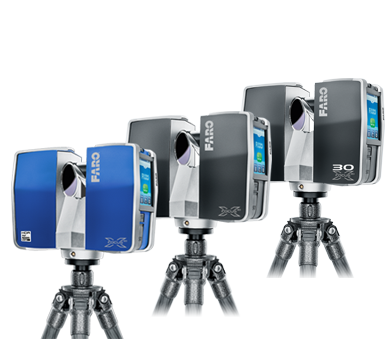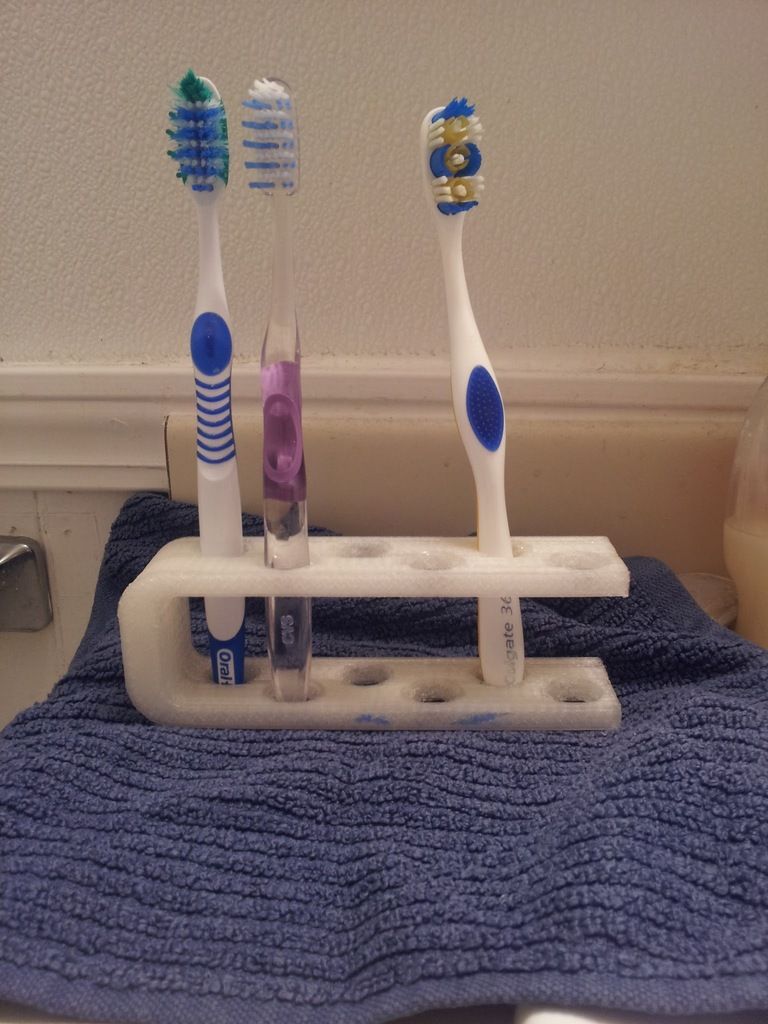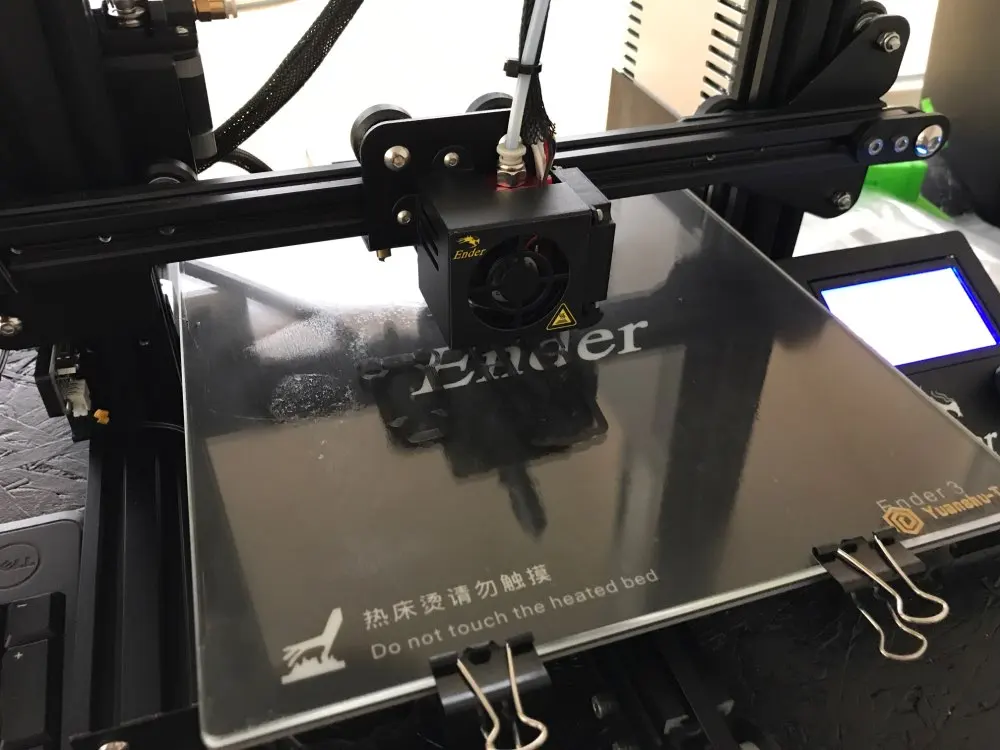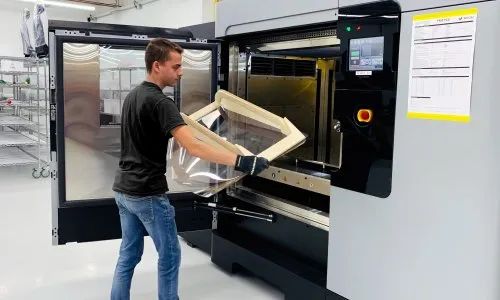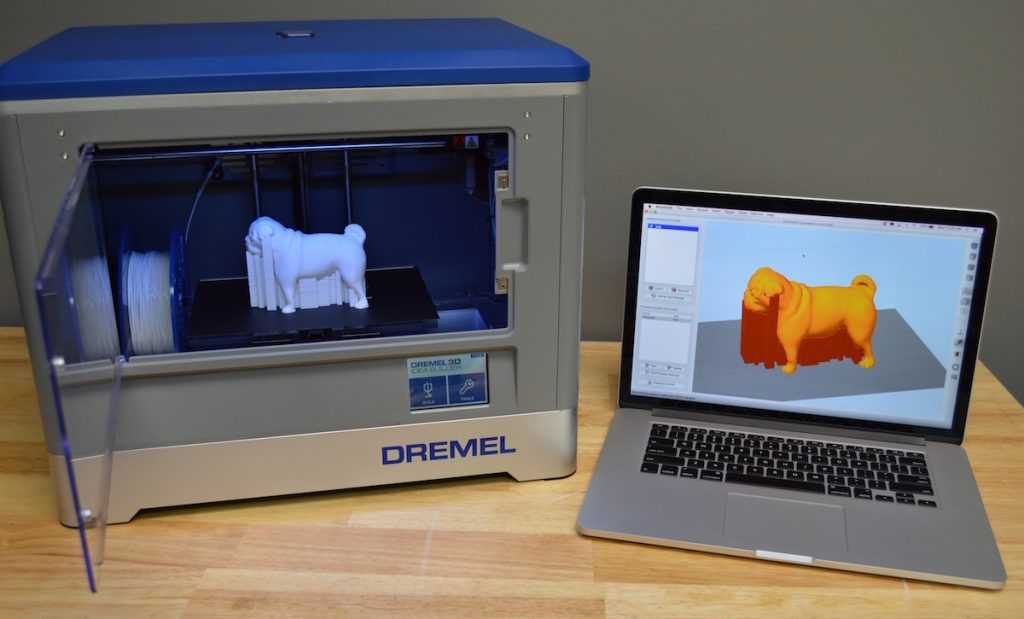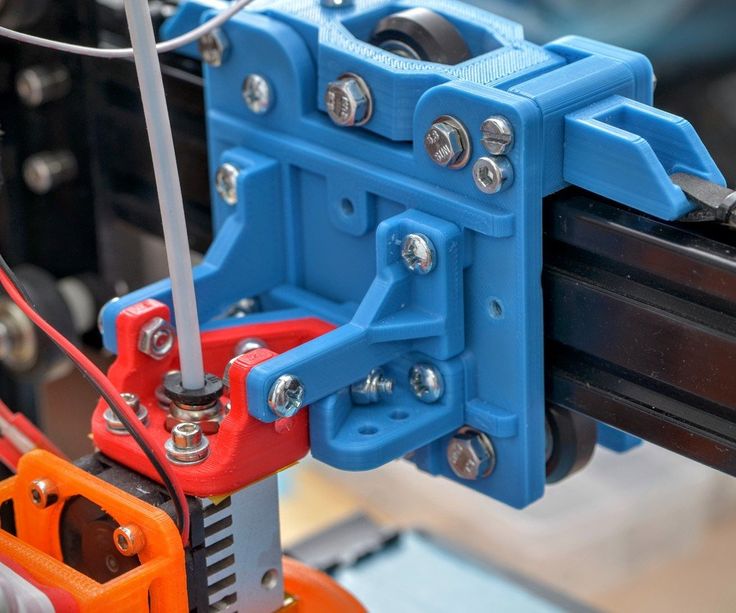Patent 3d printing
How to Patent a 3D Printed Product
Additive manufacturing – also known as 3D printing – is a modern method of manufacturing. Traditional manufacturing methods include injection modeling, machining, forming, and joining.
3D printing varies from traditional methods by using a computer file and 3D printer to print an object in layers from the base up.
3D printing has advantages over traditional methods because it:
- Is highly customizable
- Requires less assembly
- Increases design freedom
- Is cost effective for low volume production
3D printing is an excellent way to prototype your product before deciding to proceed with a patent. Scott Tarcy at CADDesignhelp.com works with inventors to create CAD designs, 3D printed prototypes, and illustrate patent drawings.
“I tell inventors all the time that it will take multiple revisions of CAD and prototypes before it will be final,” Tarcy said. “Sometimes, after the first round of CAD and prototyping it becomes apparent that the idea will not work, in which case it is best to pivot. Getting a patent on a product that is not possible to produce doesn’t make a lot of sense. “
3D printing a product begins with creating a file in the suitable format (.amf) and using computer aided design (CAD) software. It is advisable to use the services of a CAD designer who has experience with 3D printing to create this file. These CAD designs can also be used as the basis for your patent drawings.
The CAD file is then sent to a 3D printing shop that manufactures your product. The 3D print shop you use will determine the cost, and what materials you can print with. 3D printing is a great way to create a prototype of your invention.
Patent law allows the United States Patent Office (USPTO) to only grant patents for inventions that are “new” and are not publicly available. Discussing an invention with a CAD designer and sending the file to a 3D print shop could be considered a public disclosure of the invention. This public disclosure could technically be used to prevent an inventor from receiving a patent.
It is highly advisable to meet with a patent attorney first and discuss 3D printing a prototype. The attorney likely will advise entering into non-disclosure agreements with the CAD designer and 3D print shop before disclosing an invention to them.
Can You Patent a 3D Printed Product?
Yes, you can patent a 3D printed product. Patent law in the US allows a person to get a utility patent for “processes, machines, manufactures and compositions of matter.” A 3D printed product is considered a “manufacture.”
The utility patent you receive for a product covers all claimed embodiments of that product no matter how it is produced. The patent will protect your product the same if it is made by hand, manufactured using a mold, or 3D printed.
You may also file a design patent covering the aesthetic appearance of your product. This design patent would protect the appearance of your product regardless of whether it was manufactured conventionally or by 3D printing methods.
Can You Patent a 3D Printable File?
You may file a design patent that protects the aesthetic appearance of your design. This protection extends to the design located in the 3D printable file.
Computer files are extremely easy to duplicate and share. If a 3D printable file of a product protected by a utility patent was easily available online, virtually anyone could 3D print the product.
3D printing a product covered by a utility patent would be considered infringement of the utility patent. However, this would be very difficult to track and not worth suing each individual person for a one-time infringement.
Getting a design patent on your 3D printable file will help you enforce your patent rights online. You can use this design patent to prevent people from reproducing and distributing this file without your permission.
Patenting a 3D Printed Product
The process of patenting a 3D printed product may include filing a utility patent and a design patent.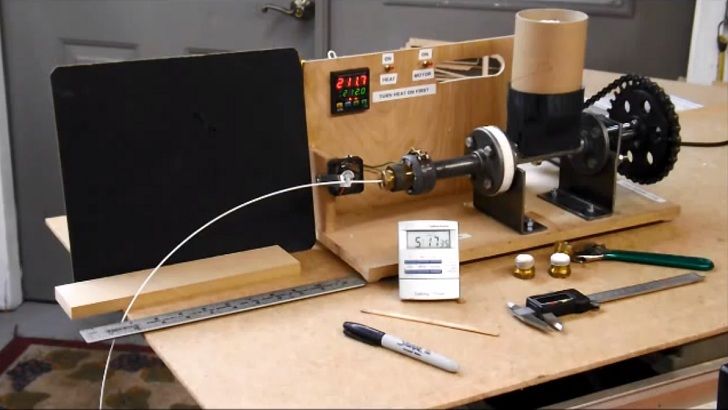 As with all patents, it is highly advisable to consult a patent attorney as soon as you think you have a patentable idea.
As with all patents, it is highly advisable to consult a patent attorney as soon as you think you have a patentable idea.
Step 1: Turn an Idea into an Invention
An applicant must first have an invention to patent. Identify the problem your idea solves. Determine how your solution can exist and work in the real world. Think through all possible ways of implementing your idea into the real world. Research how others have done this before and find a better solution.
Step 2: Contact a Patent Attorney
You should contact a patent attorney once you think you have a novel invention. A patent attorney can help advise you on many aspects of patenting such as.
- If your invention qualifies for a utility and design patent
- The next best course of action
- Conducting a patentability search
- Drafting non-disclosure agreements
- Drafting intellectual property assignment agreements
- Preparing a patent application
It is wise to contact a patent attorney early in the patenting process. A patent attorney can help tailor the patent application process to the specific needs of your invention.
A patent attorney can help tailor the patent application process to the specific needs of your invention.
A patent attorney can draft non-disclosure agreements so an inventor can freely discuss their invention with a CAD designer and 3D print shop. A patent attorney may also draft a contract that assigns all intellectual property rights related to the CAD files and 3D printed prototypes to the inventor.
Step 3: Commission a CAD design
Contact a CAD designer with 3D printing experience. The patent attorney you are working with may have a CAD designer they use for patent drawings. Discuss with your attorney the need to have non-disclosure agreements in place before disclosing your invention to others.
Step 4: 3D Print a Prototype
Use your CAD file to 3D print a prototype of your product. You may choose to use the same company to design the CAD file and 3D print it. Determine what material to print your prototype with.
Test the prototype. Does it work as expected? You might discover more uses for your product, which you can add to the utility patent. You may recognize that your product doesn’t work as well as expected and make changes to it. Maybe you even decide that your prototype is so lousy, it’s not even worth pursuing a patent for.
You may recognize that your product doesn’t work as well as expected and make changes to it. Maybe you even decide that your prototype is so lousy, it’s not even worth pursuing a patent for.
Step 5: Determine What Patents to Apply For
It is possible for an inventor to file an application for the following patents.
- Utility patent on the product
- Design patent for the product
- Design patent for the design within the file
Determining what patents to apply for is based on the product, and how the inventor plans to make money off the patent. This should be discussed with a patent attorney.
Because the inventor did not design the file, arguably they are not entitled to the design patent covering the file. Discuss assignment of intellectual property rights with your patent attorney before disclosing your invention to anyone.
Step 6: Prepare the Patent Application
It is highly advisable to use the services of a patent attorney to prepare and file a patent application.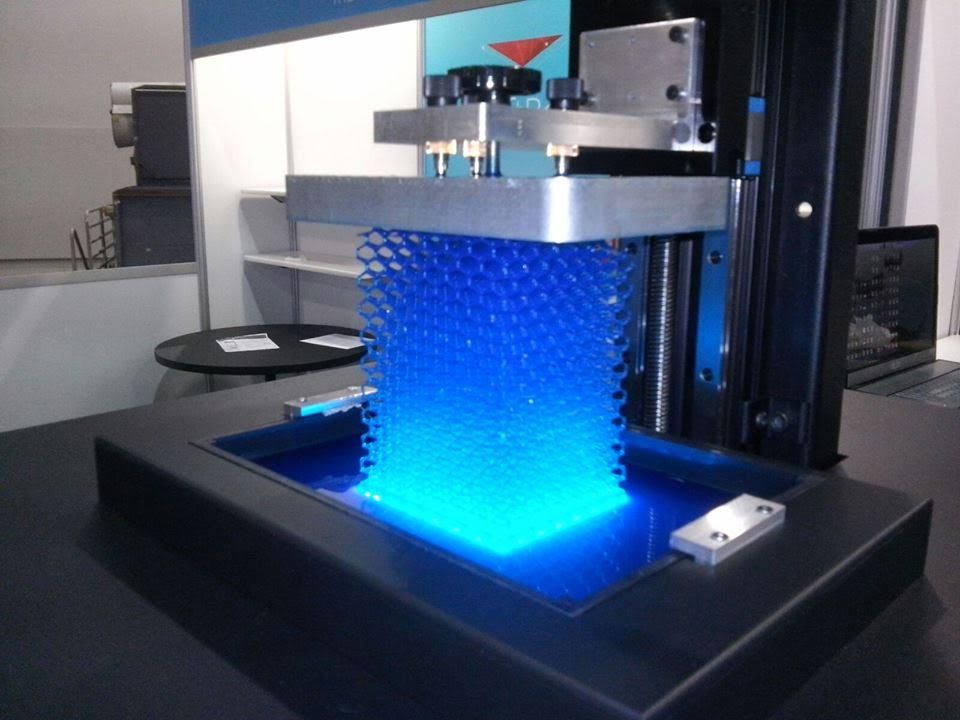 Although an inventor may file and obtain their own patent, there is no guarantee that the patent would sufficiently protect the invention.
Although an inventor may file and obtain their own patent, there is no guarantee that the patent would sufficiently protect the invention.
Each patent application has several forms that must be filled out and submitted. The patent specification can be drafted from scratch or by using templates found online.
Step 7: Submit the Application
The typical method of filing a patent application is using the USPTOs Electronic Filing System (EFS-Web). Navigate to the EFS-Web portal and create a USPTO account. The required documents are uploaded to EFS-Web in PDF format and submitted. Patent fees are also paid through the EFS-Web portal.
Applications can also be filed by mail or delivered in person to the USPTOs main office in Alexandria, VA. Applications should be mailed to “Commissioner for Patents P.O. Box 1450 Alexandria, VA 22313-1450.” Applications filed by mail or in person are charged an additional fee.
Step 8: Wait for Approval
It takes some time for the USPTO to start examining an application due to the large number of applications it receives.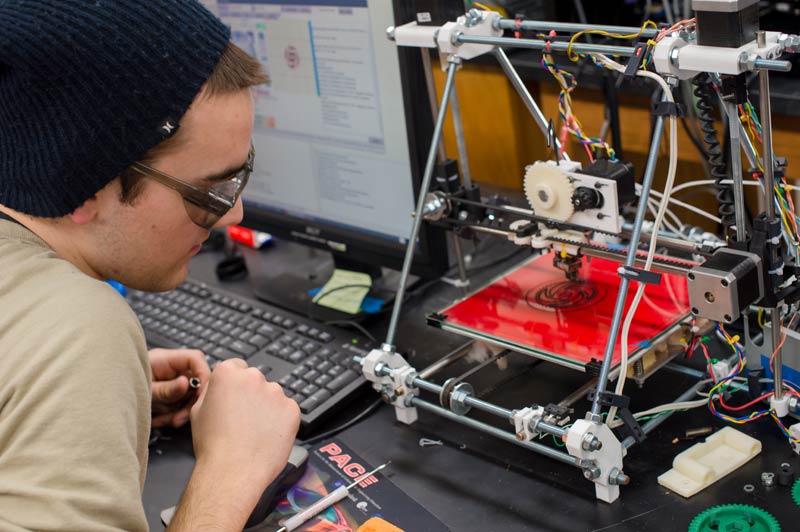 The time it takes for the USPTO to begin examining a patent varies by the inventions technological field. The historical time to receive a first office action is 17.6 months.
The time it takes for the USPTO to begin examining a patent varies by the inventions technological field. The historical time to receive a first office action is 17.6 months.
Very few applications are approved on the first office action. The applicant fixes the issues the USPTO disagrees with in the first office action and resubmits for a second examination.
If the applicant correctly fixes all the issues, then a notice of allowance is issued. The typical amount of time for a patent application to make it to an allowance or final rejection is 23.4 months.
While the application is pending you may view the status using the USPTOs Patent Application Information Retrieval Tool (PAIR). Login using your USPTO account. PAIR shows where your application is in the process and any action items that you need to address. Correcting issues or uploading more documents is done in the EFS-Web portal.
Step 9: Petitions and Appeals
If your application is rejected a second time, you may appeal the decision.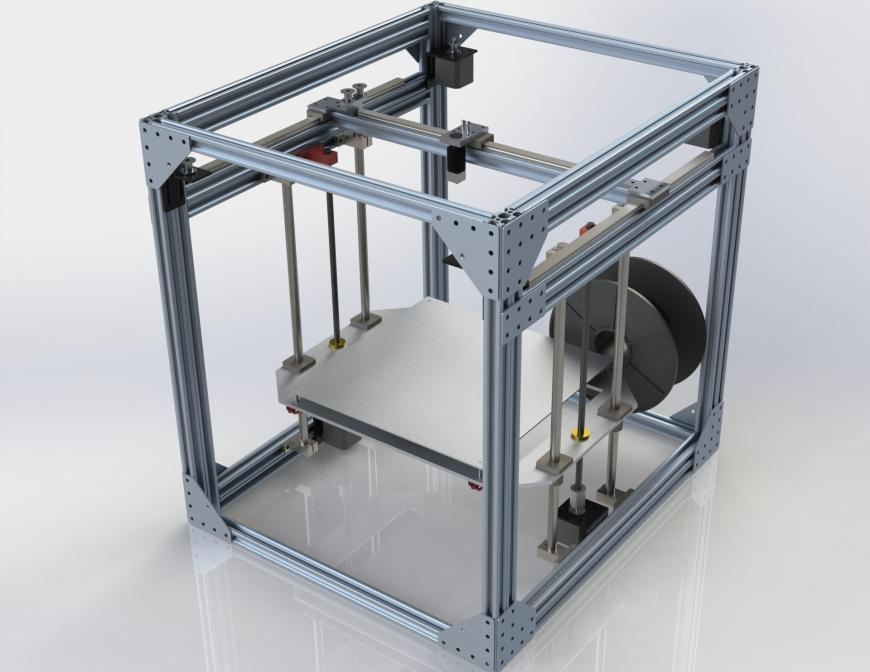 Appeals at the USPTO are heard by the Patent and Trademark Appeals Board (PTAB).
Appeals at the USPTO are heard by the Patent and Trademark Appeals Board (PTAB).
The judges will review the examiner’s decision, hear arguments from both the applicant and the USPTO, and make a final decision on whether the patent will be granted or not.
To appeal a final rejection, file a notice of appeal in the EFS-Web portal and pay the appropriate fees. Like a normal court of law, an individual can represent themselves in an appeal hearing, but using the services of a patent attorney is highly recommended.
Step 10: Enforcing Your Patent Rights
Just because you have a patent doesn’t mean that people won’t infringe your invention. It is the responsibility of the patent owner to enforce the rights granted by the patent.
If you think someone is infringing your patent, you should contact them in writing and explain why you think they are infringing your patent and ask them to stop. If they do not stop, you can initiate a lawsuit in a federal court for patent infringement.
You can attempt to stop them from infringing your patent by asking the court for an injunction. You may also sue for damages in lost profits. In court, your patent is a valid legal document that defines your invention and will be used to prove infringement.
3d Printer Patents | UpCounsel 2023
Technologies and inventions that facilitate the 3D printing process are legally protected from the use of others by 3D printer patents.3 min read
Updated November 24, 2020:
3D Printer Patents
Technologies and inventions that facilitate the 3D printing process are legally protected from the use of others by 3D printer patents. Within the past few years, controversy arose about the simultaneous expiration of many critical 3D printing patents.
Opponents spoke out against the conventional idea that patents create competition by forcing others to invent workarounds for protected inventions and intellectual property. They argued that 3D printing patents prevent innovation since companies and individuals may avoid creating similar technologies and investing in research and development in the 3D printing industry for fear of being sued. They believe that this may have hurt the progress of this technology by barring new players from entering the market, reducing competition, and inflating prices.
They argued that 3D printing patents prevent innovation since companies and individuals may avoid creating similar technologies and investing in research and development in the 3D printing industry for fear of being sued. They believe that this may have hurt the progress of this technology by barring new players from entering the market, reducing competition, and inflating prices.
Between 2013 and 2015, patent protection expired for several nascent 3D printing inventions. While new 3D printers based on these technologies have been created by several different companies since 2015, it is unclear whether this occurred as a direct result of the end date of these patents.
In 2016, the first product by new 3D printing company Carbon was announced. This creation, the Carbon M1, takes advantage of the company's Continuous Liquid Interface Product, or CLIP, which some believe is a derivative of an early VPP 3D printing patent. However, the two patent applications filed for CLIP at the end of 2014 indicate that this is not the case.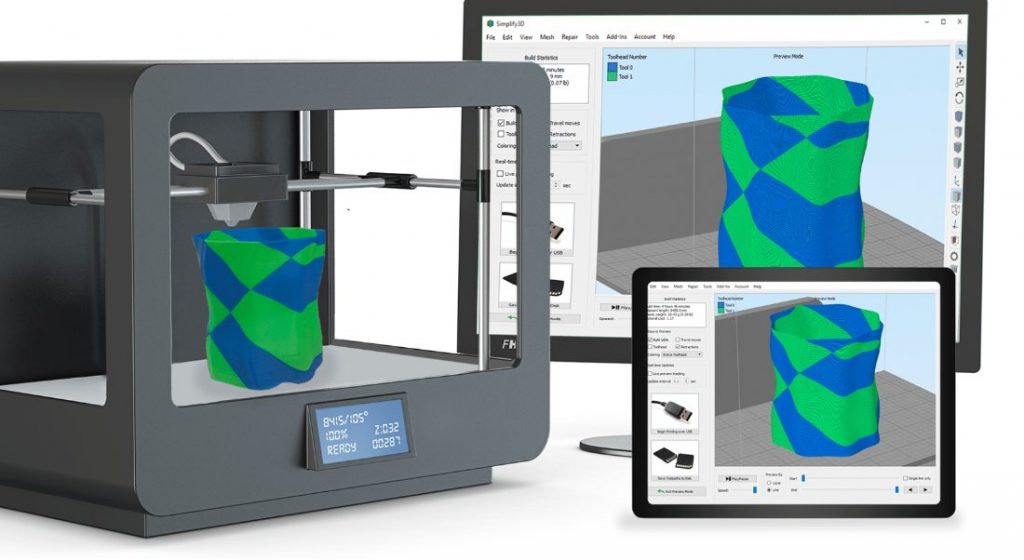 Since PBF patents expired, new companies have begun to offer low-cost versions of this type of 3D printer, but again, whether this directly resulted from the patent expiration is unclear. Two of these companies are Sinterit and Norge Systems.
Since PBF patents expired, new companies have begun to offer low-cost versions of this type of 3D printer, but again, whether this directly resulted from the patent expiration is unclear. Two of these companies are Sinterit and Norge Systems.
In 2014, Norge Systems began an ultimately unsuccessful fundraising campaign via the online community Kickstarter for two affordable home PBF printer models. After the failure of this campaign, the company was bought out by another company and never released a consumer-grade 3D printer. Sinterit recently released an affordable 3D printer called Lisa, but it is unclear as of yet whether this product will ultimately be a commercial success.
More 3D Printing Patents Expiring
The following 3D printing patents will expire within the next few years, listed in order of the soonest expiration date.
- A McAlea patent for a process for 3D fabrication that involves repeatedly dispensing and fusing layers of powder that consists of spherical particles.

- A Lohner and Wilkening patent for an apparatus that can 3D print objects using radiation. The invention has a removable base that facilitates faster creation time for 3D prototypes.
- A patent granted to Russell for an apparatus that can 3D print from a stored memory.
- A Batchelder patent for a prototyping method for predetermined 3D shapes. It uses a thermal substance that becomes solid at a specific temperature.
- A patent granted to Manning for apparatuses and methods for laser sintering. The invention includes a powder spreading system that layers the substance onto a surface and a laser with a scanner that is used to direct the beam of light along a vector.
- A patent granted to Meiners for a manufacturing procedure that can be used for any molded body, including a product prototype or component, tool prototype, or spare part. It uses 3D CAD data to deposit metallic powder in layers to create the desired object.

- A Swanson et al. patent for a thin-wall tube liquefier. This invention uses an extruder to deposit layers of a solidifying material that can be used to create 3D objects.
How Expiring Patents Are Ushering in the Next Generation of 3D Printing
2016 has seen more 3D printing innovation than ever before. Although it's not yet clear whether this will be the next industrial revolution, we do know that we can expect the price of 3D printing to drop as the quality of the objects created increases. This development is directly related to the new accessibility of existing technologies as the patents for these 3D printing innovations expire. The companies who owned these original patents no longer have a monopoly on the 3D printer industry.
As with similar technologies, the new wave of 3D printing innovation is traveling from industry to the consumer and retail sectors. This wave includes metal, powder, and liquid-based methods for 3D printing.
If you need help with 3D printer patents, you can post your legal need on UpCounsel's marketplace.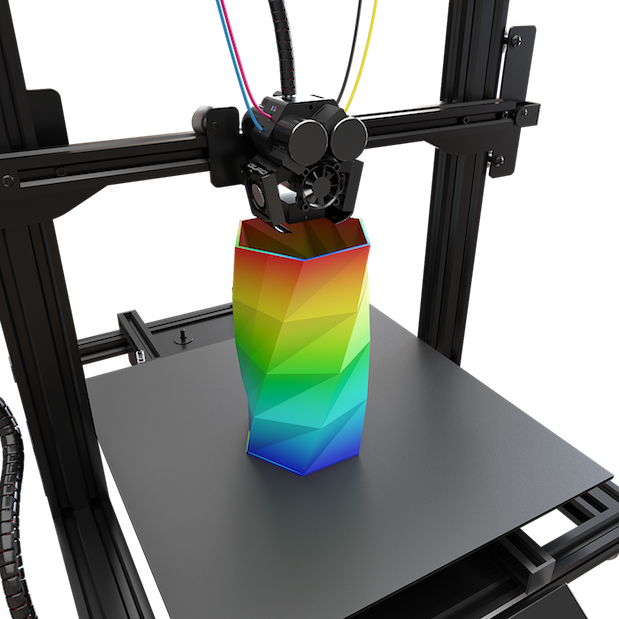 UpCounsel accepts only the top 5 percent of lawyers to its site. Lawyers on UpCounsel come from law schools such as Harvard Law and Yale Law and average 14 years of legal experience, including work with or on behalf of companies like Google, Menlo Ventures, and Airbnb.
UpCounsel accepts only the top 5 percent of lawyers to its site. Lawyers on UpCounsel come from law schools such as Harvard Law and Yale Law and average 14 years of legal experience, including work with or on behalf of companies like Google, Menlo Ventures, and Airbnb.
Robbo received a patent for a 3D printer
Technique
|
Share
Robbo, a Russian manufacturer of educational robotics for children, received a patent from the Federal Service for Intellectual Property for one of its developments, the Robbo Mini 3D Printer, designed for teaching children 3D modeling and 3D printing at home. The decision to grant a patent was made on the basis of the patentability conditions "novelty" and "originality" provided for in paragraph 1 of Art. 1352 of the Civil Code of the Russian Federation.
1352 of the Civil Code of the Russian Federation.
Robbo's patent application was filed in August 2020. As a result of the examination, the compliance of the 3D printer with the requirements of articles 1231.1, 1349 and 1352 of the Civil Code of the Russian Federation was established, on the basis of which a patent for industrial design No. 122799 was issued. The patent will be valid until August 2025
Robbo Mini 3D Printer is designed as a 3D printing tutorial and runs on open source software and hardware. The 3D printer turns any model drawn by a child into a real three-dimensional object made of safe, biodegradable PLA plastic. Children can create models of products and plastic mechanisms up to 170x100x100 in size. At the same time, thanks to its compact design, the 3D printer takes up little space: its dimensions are 370x280x350 mm, and its weight is only 3.5 kg. In addition to the printer itself, the kit also includes a USB stick with software and settings, a bar filter, a power supply, and a USB cable.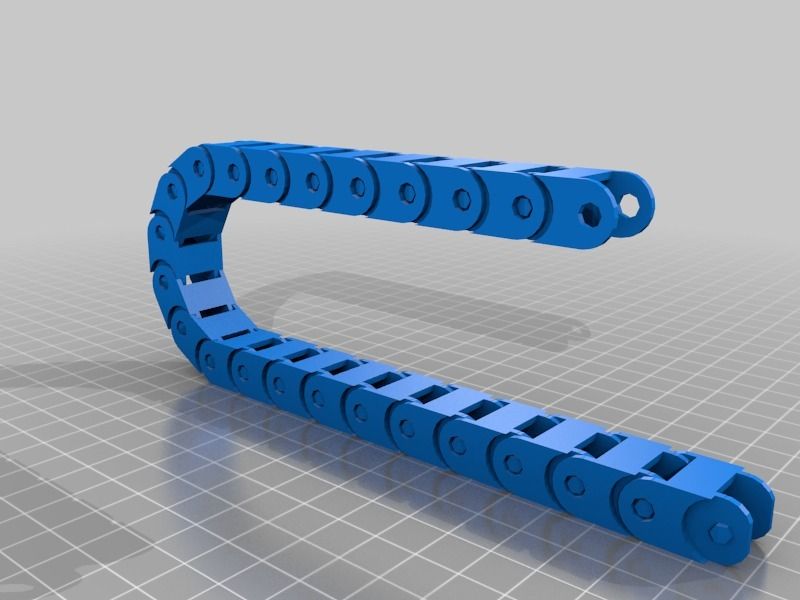
Vladimir Andreev, DocsVision: In 2023, paperless personnel turnover will be among the most demanded areas of automation
Digitalization
Already in the near future, as noted by the company, additive technologies will be widely used in domestic production, medicine and the space industry. And "Robbo" will take a direct part in the training of personnel for the new segment of the IT industry.
“The global 3D printing market is forecast to grow by almost 2.5 times over the next five years. However, unlike other countries where additive technologies have been actively used for several decades, for example, in industry and manufacturing, in Russia the 3D prototyping industry is only in its infancy. The appearance of the product “Robbo 3D-printer Mini” in Russian homes and schools will make it possible to prepare a pool of specialists capable of bringing the domestic industry of additive technologies to a qualitatively new level in the future. Moreover, our educational 3D printer has no analogues yet,” said Pavel Frolov , founder and producer of the Robbo company.
Moreover, our educational 3D printer has no analogues yet,” said Pavel Frolov , founder and producer of the Robbo company.
- Which smartphone display is better: AMOLED or IPS?
New ORNL 3D printing patent scandal
News
positioning system. The fact of issuing a patent caused a flurry of criticism from the developers of open source systems, who have been designing such additive equipment for a long time.
Hangprinter additive system. Photo: Thomas Sanladerer
ORNL and the patent office were criticized by two well-known promoters of open source additive technologies, Professors Dshoshua Pearce and Adrian Bower. Pierce is known for projects such as an inexpensive homemade 3D printer for printing metals using arc deposition technology, a homemade Cerberus additive system for working with refractory structural thermoplastics, a grinding machine from a grinder and 3D printed parts for making compression screws used in 3D printers for printing with granulates, and many other works. Bower needs no introduction at all - he is none other than the founder of the RepRap movement.
Bower needs no introduction at all - he is none other than the founder of the RepRap movement.
Adrian Bower gets to know Hangprinter. Photo: Sally Bower
Academics defended a young Swedish engineer named Torbjorn Ludwigsen, who asked on Twitter about the implications for his own project called Hangprinter. The fact is that the ORNL patent very closely repeats the development of the Swede five years ago, which we have already talked about in the material at this link. The essence of the project is in an unusual positioning system using cable guides with a suspended extruder. Such a scheme makes it possible to build simple and inexpensive, but at the same time large-format additive systems.
Hangprinter additive system. Photo: Torbjorn Ludwigsen
Torbjörn has built a "home" FDM 3D printer, and ORNL's patent US 11230032 considers a construction option for outdoor cement 3D printing suspended from a truck crane. There is no fundamental difference between these developments, the differences mainly relate to the purpose of the equipment.
SkyBAAM 3D printer illustration from ORNL patent
To be fair, the Hangprinter concept is not unique either. Similar options were considered by other designers, examples include Brandon Heller's SkyPrinter 2013 and RigTig's Big 3D Printer 2016. Torbjorn himself took up the job in 2014, and presented the first prototype in 2017. The problem is that none of the previous authors on this topic, including Torbjorn Ludwigsen, have applied for patents, preferring to put their developments in the public domain.
SkyDelta 3D printer prototype. Photo: Brandon Heller
Bower and Pierce believe that the ORNL patent should be invalidated because it repeats someone else's design and differs only in minor modifications that do not give the right to a patent. The piquancy of the situation is also in the fact that in the notes to the patent application there is a footnote to the news about Hangprinter, and therefore the patent office could not have been unaware of the project of the Swedish engineer.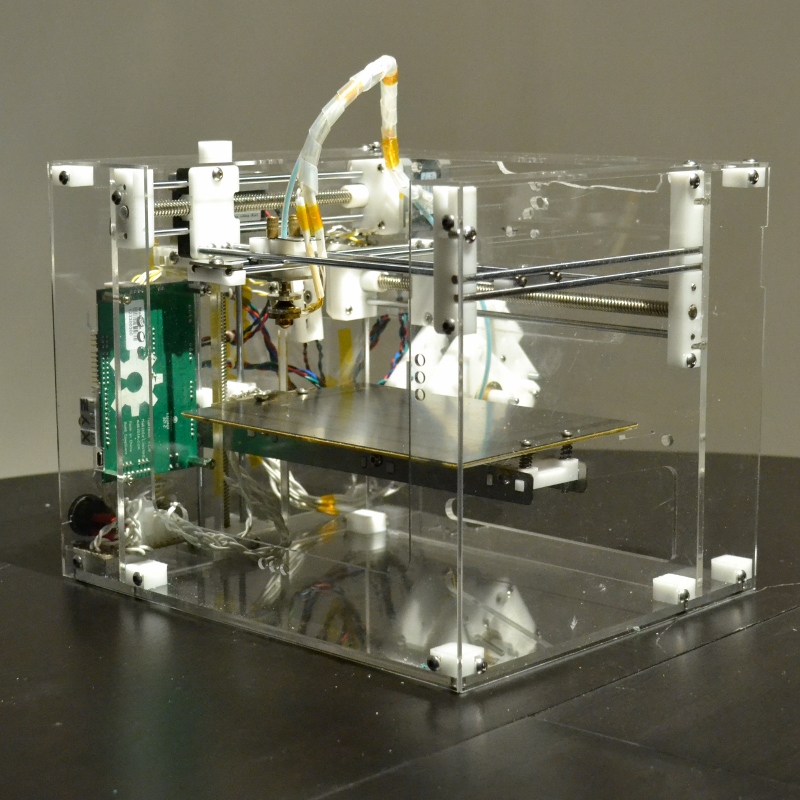
Hangprinter additive system. Photo: Torbjorn Ludwigsen
The question arises: why did ORNL need this at all? There are several options here. In addition to the obvious versions of appropriation of foreign technologies or patent trolling, one can also assume the opposite version. The fact is that many companies, on the contrary, issue not protective, but so-called defensive patents, and they do this precisely to protect against potential exploiters of other people's developments. The concept of a defensive patent, as a rule, provides for the voluntary waiver of exclusive rights. In other words, "we have patented, but everyone can use it, the main thing is not to bother us with claims."
Thorbjorn Ludwigsen with the 3D printed Tower of Babel demonstration. Photo: Make magazine
Ludwigsen himself takes a rather reserved view of the situation, suggesting that this may just be an attempt to justify receiving a research grant.


